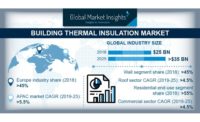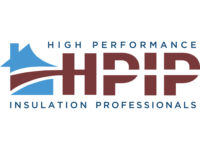This industry study analyzes the $9.7 billion U.S. insulation market, presenting historical demand data (2010, 2015 and 2020) and forecasts (2025 and 2030) by product (foamed plastic, fiberglass, mineral wool, cellulose, reflective insulation & reflective barriers, and other insulation materials) and market.
Demand for insulation in the U.S. is forecast to increase 1.9 percent annually to 10.4 billion pounds in 2025 from a high 2020 base, which resulted from an increase in home renovation and new home construction during the pandemic. While demand will expand more quickly in value terms - boosted by price increases for key raw materials such as plastic and mineral wool - moderating residential building construction beginning in 2022 will dampen the outlook.
Key factors that will support insulation market demand through 2025 include:
- Rebounding commercial construction activity, which fell sharply during the COVID-19 pandemic.
- Stringent fire safety policies and increasing energy efficiency codes throughout the country, which often call for greater use of insulation in buildings.
- Strong rebounds in transportation equipment production.
- Increasing production of HVAC equipment, industrial equipment and appliances, particularly refrigerators and freezers.
Plastic Foam & Mineral Wool Insulation Materials Continue to Gain Share from Fiberglass
Fiberglass will continue to account for the largest share of insulation demand by volume because of its relative ease of installation and cost effectiveness (i.e., it provides good R-values at a relatively low cost). However, its market share will decline through 2025, primarily due to increased competition from foamed plastic and mineral wool caused by the drive toward increasing insulation and improving air sealing in new residential buildings.
- Foamed plastic offers more R-value per inch than fiberglass.
- Both foamed plastic and mineral wool products can be used between the framing and cladding to provide an air barrier.
Sharp Polystyrene Price Increases Boost Market Value of Plastic Foam
Prices for plastic foam insulation are expected to expand more quickly than those of any other material. Polystyrene prices have risen above the average rate of inflation due to government regulations aimed at eliminating the use of HFC-134a in XPS blowing agents and plant closures that have constricted supply. Though prices for foamed plastic are expected to remain elevated, the material will remain competitive against other insulation due to its ease of installation, which is important in a tight labor market.
Rebounds in Commercial Construction & Manufacturing to Boost Nonresidential Markets
While the residential market will continue to account for the largest share of demand gains through 2025, faster growth is expected in other markets, such as commercial construction and industrial and plant equipment. These markets will be boosted by rebounding commercial building construction and manufacturing activity as the economic effects of the COVID-19 pandemic lessen and businesses increase investment in new facilities and capacity expansions. Additionally, resumption of travel will boost insulation demand growth in transportation equipment.
Find out more here.





Report Abusive Comment